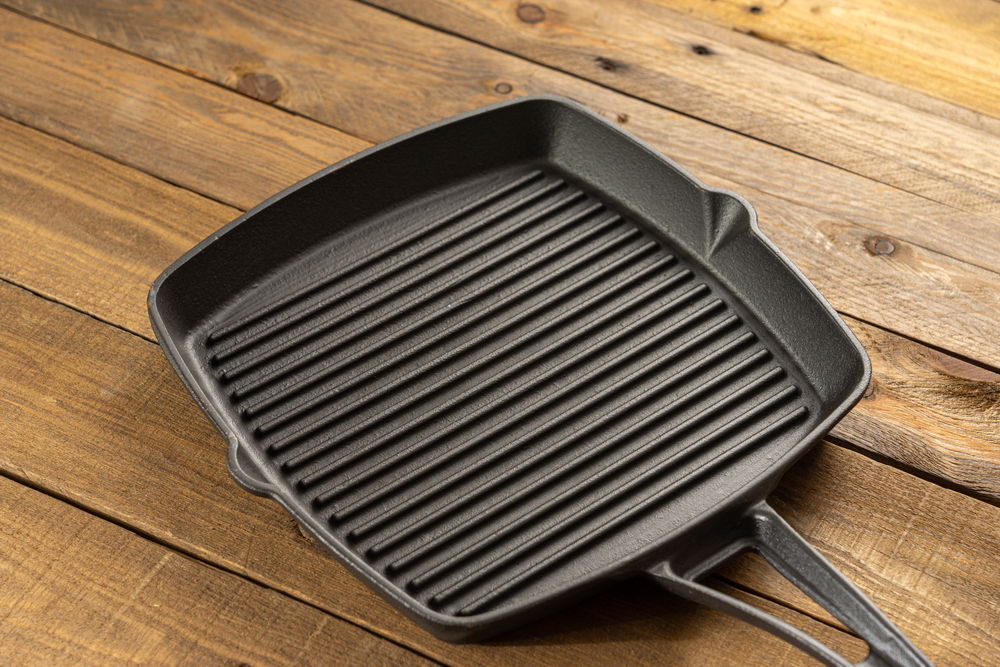Introduction
It’s crucial to learn how to clean a cast iron skillet to preserve the hard work you put into stripping and reasoning it. Cleaning and seasoning cast iron is intimidating. There is a common misconception that cast iron is delicate and simple to mess up. And, as a matter of fact, nothing could be further from the truth.
Man has been cooking on cast iron for centuries. Its durability and utility have made it a staple in kitchens around the world, from traditional Asian cooking culture to New York steak houses. Now you will learn about these easy steps for cleaning your cast iron. You’ll be prepared to take on any meal or mess.

Cast iron skillets are one of our absolute favorite pans to cook with when we’re in the kitchen. They’re inexpensive, good for just about any recipe, the workhorses of kitchen witchcraft that outlast all of you, and with them, you never have to worry about any weird chemicals seeping into what you make to eat. In fact, it can even add nutrients to your food.
We’ve got you covered with our comprehensive cleaning and care guide on how to clean a cast iron skillet, whether you’ve just bought a brand-new one or are trying to resurrect a beloved, family-passed skillet.
Why to cast iron?
That’s fair it’s a legitimate question! This is particularly true in the era of effortless, non-stick, non-toxic, and aesthetically pleasing cookware. It might be old-school (like, maybe you literally got a cast iron skillet handed down from your grandmother?), but there’s a reason why it quite literally stands the test of time.
Here are the reasons for casting iron:
• Versatility: It will go from stovetop to oven to grill or campfire,
• Flavor: We call it “seasoning” for a reason. With each meal, your cast iron will get tastier.
• Sear-ability: It’s beneficial for various applications, particularly when you desire a crisp sear on your thinly sliced meat or sturdy veggies. This is your gal!
• Longevity: We’ve had the longest relationship with this pan, but it’s always in need of a little TLC.

Cleaning Cast Iron: Easy Steps
Here are some simple steps on how to clean a cast iron skillet. You must follow these steps to clean a cast iron skillet.
Step 1: Wipe Out Residue
• Allow your pan to cool down first and then wipe off all the fats and leftover food from the sides of your pan’s interior with your cloth. Cleaning cast iron while it is still warm will reduce the time and difficulty of cleaning your pan, as well as help prevent food from sticking.
If you are able to clean the skillet by simply wiping it out, stop here. It is not an issue if there is a little bit of oil left behind after cleaning. Keeping a pan from drying out is a big part of long-term maintenance. It is needless to overclean your cast iron skillet, and doing so will simply make your seasoning worse.
This will be all that is required to clean your skillet after a lot of meals. If you are unable to clean out cooked food or your meal had a particularly strong flavor that you want to avoid imparting on your next dish, proceed to the next step.
Step 2: Clean with Water and Soap (If Needed)
• After you’ve done some preliminary cleaning, wash with warm water and a mild dish soap. If your skillet requires a stronger scrub, we recommend using a chainmail scrubber. DO NOT use anything strong like steel wool, sponges, or other scratchy means of cleaning-this will strip away the seasoning of your pan. For tough messes, fill your pan halfway full of water and heat it up on your stove. As the water heats up, sticky leftovers should soften enough to be easily wiped out. After bringing the water close to a boil, pour out the water from your skillet and use a chainmail scrubber to remove all food particles.

Step 3: Dry and Prevent Rust
• Rinse and dry your cast iron skillet right away after cleaning it. We recommend using a lint-free towel. Never allow cast iron to air-dry, as this can cause rust to build up. This is essential especially when you have just soaped. Remoisturizing your skillet with oil.
Step 4: Re-Season and Heat
• Place your cleaned cast iron skillet on low heat for 5-10 minutes. Wipe the skillet dry with a towel to remove any additional moisture. After all the water has evaporated, remove the pan from the heat and wipe with a small amount of cast iron seasoning or a half teaspoon of high-smoke oil throughout the interior of your skillet. Be sure to take off extra oil/seasoning blend so the surface will be all but dry after wiping the oil out with a separate cloth or towel.
Step 5: Store with Care
• Store your skillet in a cool, dark, dry place, or on the stovetop for regular use. If you have a few cast iron pans, never stack them on top of each other for too long, as this will tarnish the seasoning. We also recommend proudly placing them up on your kitchen walls.
Things Not to Do When Cleaning a Lancaster Cast Iron Skillet
How do you clean a cast skillet? iron Cast-iron skillets seem to confound people. It makes sense: in the age of nonstick cookware and stainless steel, these can be intimidating. You have to season them before cooking with them.
You wash them very gently so as not to strip of the natural nonstick coating. Do not soak them. Do not place them in the dishwasher. If you tweet that you have one, many white dudes are going to lecture you on how to care for them and make you think that you’re going to damage it at a moment’s neglect.
But I’m here to soothe your nerves and let you know a simple truth: It is very difficult to irreparably mess up a cast-iron skillet. Here are things to never do when cleaning a Lancaster Cast Iron Skillet.
• Use the abrasive cleaning method, which may include the steel wool sponge. That would certainly weaken or strip off your seasoning.
• Dunk your cast iron skillet in the sink. You will have a rusty skillet by the end.
• Run your cast iron skillet through the dishwasher. Again, overexposure to moisture will rust. Plus, it will remove the seasoning you have put so much effort into developing.

How clean is too clean?
Most new users of cast iron will be tempted to clean their cast iron skillet as they may do with all other non-iron cookware and dinnerware. It’s always nice to remove cooked-on food and unwanted strong flavors, but overcleaning cast iron can dry your skillet out or strip off the seasoning.
Seasoning is the coating that prevents your iron from rusting and makes it non-stick. Trying to scrub off residue from the bottom of your pan with savagery can scrape off the protective seasoning from the pan.
And, of course, iron is a porous material. Like all porous materials, such as wood, you want just enough moisture from your oil to penetrate the material so that your pan can be seasoned properly and not damage the material.
Ending Remarks
A cast iron skillet is an investment that, when cared for properly, can last generations. By following these cleaning and maintenance tips, you can keep your skillet. In excellent condition, ready for countless meals to come. Regularly cleaning and seasoning your skillet preserves its natural non-stick properties. And protects it from rust, ensuring it remains a reliable tool in your kitchen for years. With a little care and attention. Your cast iron skillet can be one of the most dependable and beloved items in your culinary.


1 Comment
Pingback: How to Cook Corn on the Cob in the Microwave : Made Simple - urbanlifesstyle.com